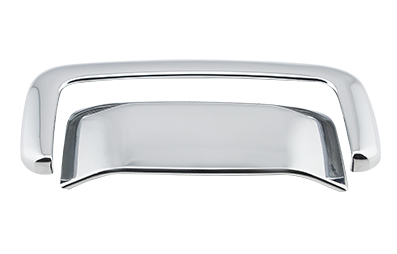Wholesale mirror flap in car, China mirror flap in car, mirror flap in car Manufacturer
In the ever-evolving landscape of automotive design, the pursuit of innovation extends to even the minutest details. One such detail that has undergone a transformative journey is the mirror flap. This article offers an in-depth exploration of the mirror flap in cars from a designer's perspective, tracing its evolution, design principles, and the significant impact it brings to the overall aesthetics and functionality of contemporary vehicles.
Evolution of the Mirror Flap:
The mirror flap, once a humble component designed for practical functionality, has evolved into a sophisticated element that reflects the advancements in automotive design. Understanding its evolution is essential to appreciating the intricate role it plays in both form and function within the broader context of a vehicle's design.
Form and Function Integration:
Designing a mirror flap involves a delicate balance between form and function. The flap's shape, size, and movement are meticulously considered to ensure optimal aerodynamics and minimal wind resistance. Designers strive to create a harmonious integration that not only complements the vehicle's overall design but also enhances its performance on the road.
Material Selection for Style and Durability:
The choice of materials for the mirror flap is a critical design decision. Designers explore materials that not only align with the vehicle's aesthetic but also ensure durability and longevity. From sleek metallic finishes to matte textures, the material selection contributes to the mirror flap's role as a design element that adds a touch of sophistication to the vehicle.
Visual Impact on Vehicle Exterior:
The mirror flap is no longer merely a functional extension; it has become a visual statement that significantly impacts a vehicle's exterior aesthetics. Its movement and design create a dynamic focal point that defines the side profile of the vehicle. As designers, ensuring that the mirror flap harmonizes with the overall design language is paramount for a cohesive appearance.
Brand Identity and Recognition:
In the realm of automotive branding, the mirror flap has emerged as a recognizable feature that contributes to brand identity. Designers work to interpret and enhance brand values through the mirror flap's design, creating a visual language that communicates the essence of the vehicle and the brand it represents.
Integration of Technology:
The contemporary mirror flap is not limited to manual adjustments; it often integrates advanced technology. Electrically adjustable and foldable mirror flaps, equipped with heating elements and built-in signals, showcase the seamless integration of technology into automotive design. Designers explore innovative ways to incorporate these features without compromising on aesthetics.
Lighting Elements for Nighttime Elegance:
Innovative lighting elements have found their way into the mirror flap design, adding a touch of elegance during nighttime driving. LED indicators, integrated into the mirror flap's structure, contribute to both safety and visual appeal. Designers carefully consider the placement and design of these lighting elements to enhance the vehicle's presence on the road.
Customization Options for Personalization:
Modern automotive design celebrates personalization, and the mirror flap is no exception. Designers provide customization options, allowing vehicle owners to choose different finishes, colors, and even lighting configurations for their mirror flaps. This level of personalization ensures that each vehicle becomes a unique expression of its owner's style.
Practical Considerations for User Experience:
While aesthetics are crucial, designers also prioritize practical considerations to enhance the user experience. Ease of adjustment, aerodynamic efficiency, and resistance to environmental elements are key factors that designers meticulously address to ensure that the mirror flap not only looks sophisticated but also functions seamlessly in various driving conditions.
Maintenance and Longevity:
The mirror flap's design extends beyond its visual appeal to considerations of maintenance and longevity. Designers focus on creating a flap that is not only resistant to wear and tear but also easy to clean and maintain. This dual emphasis on durability and practicality ensures that the mirror flap retains its aesthetic and functional integrity throughout the vehicle's lifespan.
Mirror Flap in Concept Cars:
Concept cars often serve as testbeds for futuristic design ideas, and the mirror flap is no exception. Designers use these visionary platforms to experiment with new shapes, materials, and functionalities, providing a glimpse into the potential evolution of mirror flaps in future automotive design.
Conclusion: A Symphony of Form and Function
In conclusion, the mirror flap in cars stands as a testament to the intricate dance between form and function in automotive design. From its humble beginnings as a practical component to its status as a defining feature of modern vehicles, the mirror flap reflects the ever-advancing nature of automotive innovation. As designers, we continue to push boundaries, seeking new ways to elevate the mirror flap into a harmonious symphony of form and function that contributes to the overall excellence of contemporary vehicle design.

 English
English 日本語
日本語 Français
Français Deutsch
Deutsch Español
Español 简体中文
简体中文

 View More >>
View More >> View More >>
View More >> View More >>
View More >> View More >>
View More >> View More >>
View More >> View More >>
View More >> View More >>
View More >> View More >>
View More >>(canaddletterfordraptor)-1.jpg) View More >>
View More >> View More >>
View More >> View More >>
View More >> View More >>
View More >>
